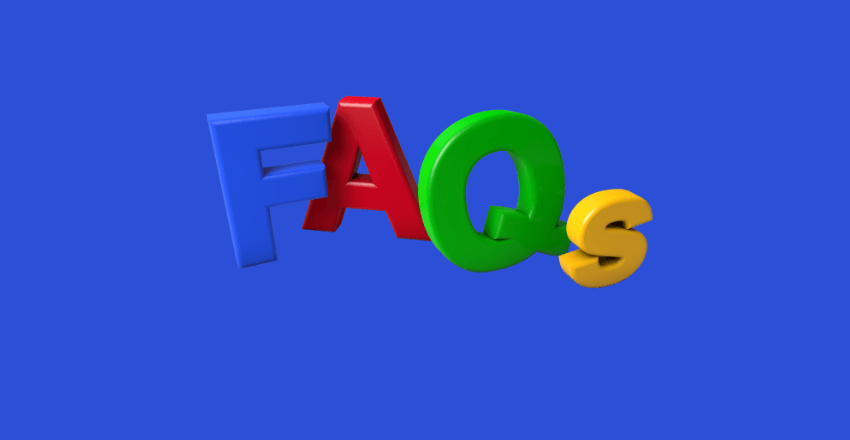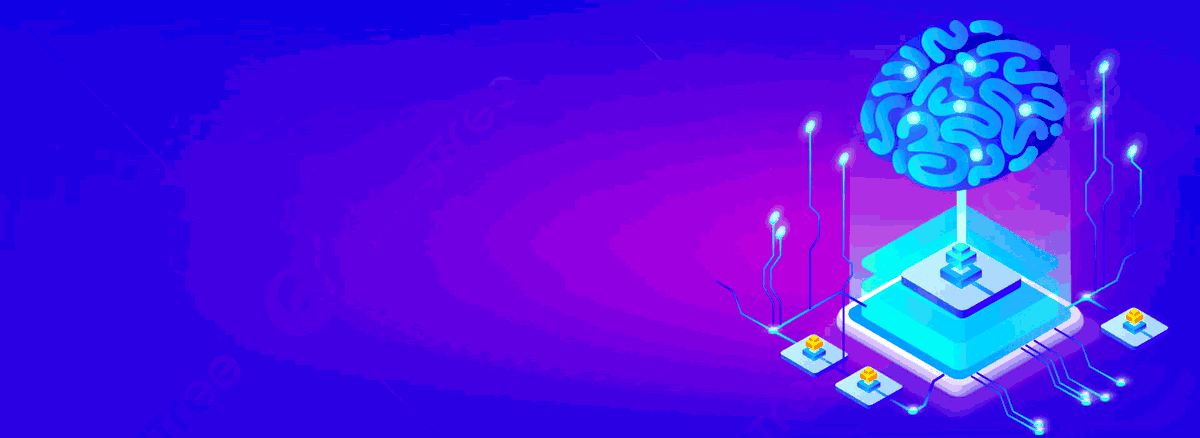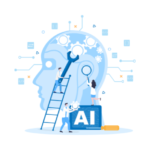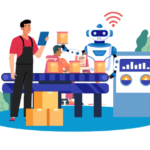 How to Use Chat GPT for Business: Transform customer engagement and streamline operations with this comprehensive guide to leveraging Chat GPT’s AI capabilities in your business strategy.
How to Use Chat GPT for Business: Transform customer engagement and streamline operations with this comprehensive guide to leveraging Chat GPT’s AI capabilities in your business strategy.
As businesses strive to streamline their operations and enhance customer experiences, integrating chatbot AI into companies has become increasingly popular. With the evolution of Natural Language Processing (NLP) and Generative Pre-trained Transformers (GPT), chatbots have become more sophisticated in understanding and responding to customer queries.
Key Takeaways
- GPT-based chatbots can streamline business operations and enhance customer interactions.
- Integrating Chat GPT requires evaluating and selecting the appropriate chatbot AI solution for your business needs.
- Implementing Chat GPT involves integrating the chatbot AI into existing systems, training the AI model, and ensuring seamless communication channels for customers and employees.
Understanding Chat GPT
Chat GPT (Generative Pre-trained Transformer) is an Artificial Intelligence (AI) language model that is trained on a large corpus of text data to generate natural language responses to given prompts.
It has become a popular tool for developing conversational agents or chatbots that can interact with users in a human-like manner.
Implementing Chat GPT in an organization can provide valuable benefits, such as automating customer service, improving response times, and increasing operational efficiency. The AI chatbots powered by Chat GPT can understand natural language inputs, analyze them, and provide relevant responses to users.
Organizations can use Chat GPT-powered chatbots in various ways, such as for answering frequently asked questions, assisting customers with their purchases, or booking appointments. They can also help organizations to streamline their internal operations by automating repetitive tasks and freeing up employees to focus on more complex tasks.
Integrating Chat GPT in an organization may require a certain level of technical expertise, but the potential benefits make it a worthy investment. By leveraging chatbot AI and natural language processing technologies, organizations can improve communication with customers, increase overall efficiency, and drive business growth.
Choosing the Right Chat GPT Solution for Your Business
When it comes to selecting a Chat GPT solution for your business, it is essential to understand the various use cases of chatbot AI. One of the most common applications of GPT-based chatbots is in customer support. With the ability to handle multiple inquiries simultaneously and provide personalized responses based on customer data, chatbot AI can significantly enhance customer interactions, leading to increased satisfaction and loyalty.
However, businesses can also employ Chat GPT in other areas, such as sales and marketing. Chatbots can engage with customers in personalized conversations, recommend products based on their preferences, and even close deals.
Moreover, GPT can automate many repetitive tasks, such as data entry and appointment scheduling, freeing up time for employees to focus on higher-level tasks.
To ensure you choose the appropriate Chat GPT solution for your business, consider the following factors:
- Business chatbot use cases
- The scale of the implementation
- The level of customization required
It is also essential to evaluate the chatbot AI’s ability to integrate with your existing business systems and the level of training required to achieve optimal performance.
Look for solutions that offer easy-to-use development platforms and robust reporting and analytics tools to track key metrics and improve the chatbot’s effectiveness over time.
Overall, selecting the right Chat GPT solution is critical to unlocking the full potential of chatbot AI in your business. With careful evaluation and planning, businesses can leverage this technology to streamline operations, enhance customer interactions, and drive growth.
Implementing Chat GPT in Your Business

Integrating chatbot AI into business processes can bring numerous benefits, from automating tasks to improving customer interactions.
Here are the practical steps involved in implementing Chat GPT in your organization to streamline your operations:
Integrating Chatbot AI
The first step in implementing Chat GPT is integrating the chatbot AI into your existing systems. This can be done through the use of APIs or third-party chatbot platforms that offer integration with different business software. It is essential to ensure a seamless communication channel between customers and employees, regardless of the channel they are using.
This integration step helps to provide effective support and responses across different platforms, thus improving customer satisfaction.
Training the AI Model
Once the chatbot is integrated into your systems, the next step is to train the AI model. The AI model should be trained with relevant data to enable it to provide accurate and relevant responses to customer inquiries. The AI team should ensure that they have a good understanding of the business processes and communication channels to train the AI model effectively for optimal performance.
Ensuring Seamless Communication
While implementing Chat GPT in your business, it is crucial to ensure a seamless communication channel between customers and employees. This can be achieved through regular communication, feedback and monitoring of the AI chatbot to ensure that it is functioning effectively.
It’s essential to communicate the use of chatbot AI to your customers through various channels and provide them with necessary instructions on how to use it.
Implementing Chat GPT in your business can enhance customer interactions, reduce response times and automate repetitive tasks, leading to increased efficiency. However, it is essential to evaluate your business requirements and choose the appropriate chatbot AI for your organization.
Enhancing Customer Interactions with Chat GPT
One of the most significant benefits of using Chat GPT for business applications is enhancing customer interactions. With GPT-powered chatbots, businesses can provide personalized support, answer customer queries, and offer recommendations based on their preferences.
One of the most common business chatbot use cases is customer support. Chat GPT can handle multiple customer inquiries simultaneously, reducing response times and freeing up human resources.
By providing quick and efficient support, GPT chatbots can significantly improve customer satisfaction and loyalty.
GPT can also be used to offer product recommendations and personalized offers to customers based on their browsing history and preferences. This enhances the customer experience by providing tailored solutions and increases the chances of customer engagement and conversion.
Furthermore, chatbots can provide 24/7 support, ensuring that customers can receive assistance at any time they require it. This can be especially valuable for businesses operating in different time zones or catering to a global customer base.
Overall, Chat GPT can significantly enhance customer interactions, leading to increased customer satisfaction, engagement, and ultimately, business growth.
Implementing Chat GPT in Your Business
Integrating Chat GPT in your business processes can seem like a daunting task, but with proper planning and execution, it can streamline operations and enhance customer interactions.
The following steps will help you implement Chat GPT successfully:
Step 1: Integrate Chatbot AI into Existing Systems
The first step in implementing Chat GPT is to integrate the chatbot AI into your existing systems. This may include incorporating the chatbot into your website or mobile app, or integrating it with your customer relationship management (CRM) software.
It is crucial to ensure that the chatbot can seamlessly communicate with other systems and applications, and that it is compatible with your business requirements.
Step 2: Train the AI Model
Once the chatbot AI is integrated, you will need to train the AI model using relevant data. This involves feeding the chatbot with various customer inquiries and responses to enable it to understand different patterns and contexts.
The chatbot AI should be able to recognize different languages, emotions, and intent, to provide personalized and precise responses to customers.
Step 3: Provide Seamless Communication Channels
It is essential to ensure that the communication channels between the chatbot and customers are seamless. Customers should be able to interact with the chatbot via their preferred communication channels, such as messaging apps or social media platforms.
The chatbot should also have a user-friendly conversational design that enables customers to navigate and access information easily.
Step 4: Ensure Continuous Improvement and Maintenance
To optimize the performance of Chat GPT, it is important to continuously improve and maintain the chatbot AI system. This involves monitoring and analyzing customer interactions with the chatbot, identifying areas for improvement, and updating the AI model accordingly.
It is also important to ensure that the chatbot is functioning correctly, and that any issues or errors are addressed promptly.
By following these steps, you can successfully implement Chat GPT in your business and harness its benefits in enhancing customer interactions and boosting efficiency.
Overcoming Challenges in Chat GPT Implementation

Implementing Chat GPT in a business setting may present some challenges that organizations need to address to ensure a smooth integration. Businesses need to consider issues such as data privacy concerns, training the AI model effectively, and ensuring continuous improvement of the chatbot’s performance.
Data Privacy Concerns
Privacy concerns are a crucial factor to consider when implementing Chat GPT. Businesses need to ensure that they collect and store customer data securely and in compliance with relevant regulations. It is also essential to provide customers with clear information about the data being collected and how it will be used.
Businesses must establish clear policies and procedures for data handling, including access control, data retention, and data disposal. They must also be transparent about the use of customer data and provide customers with the option to opt-out of data collection and sharing.
Training the AI Model Effectively
Training the AI model is a critical component of Chat GPT implementation. The quality of data used to train the model directly affects the chatbot’s performance. Ensuring that the data is unbiased, diverse, and relevant to the business context is crucial.
Businesses need to ensure that the AI model is continuously updated and refined as new data becomes available. They must also provide the necessary resources and expertise to manage and maintain the chatbot AI system.
Continuous Improvement of the Chatbot’s Performance
After implementing Chat GPT, businesses need to track the performance of the chatbot AI system regularly. They must evaluate key metrics such as response time, customer satisfaction rate, and chatbot accuracy to identify areas for improvement.
Businesses can leverage customer feedback and chatbot analytics to fine-tune the AI system and enhance its performance continually. Employing sentiment analysis tools can help identify customer sentiment and improve the chatbot’s responses accordingly.
Overcoming these challenges requires careful planning and execution of Chat GPT implementation. By addressing these issues proactively, businesses can ensure a successful integration and reap the benefits of chatbot AI in improving customer interactions and enhancing business efficiency.
Measuring Success and ROI of Chat GPT
Measuring the success and return on investment (ROI) of Chat GPT implementation is crucial for businesses. It helps evaluate the effectiveness and performance of chatbot AI in achieving business goals, enhancing customer satisfaction and engagement, and driving overall business growth.
Here are some key metrics and indicators to track the success and ROI of Chat GPT integration:
- Customer satisfaction levels: Measure the satisfaction levels of customers who interact with the chatbot AI, through feedback forms, surveys, or social media sentiment analysis.
- First Contact Resolution (FCR) rate: The FCR rate measures the ability of the chatbot AI to handle and resolve customer inquiries in the first interaction without the need for further follow-up. A high FCR rate indicates the effectiveness of chatbot AI in providing accurate and satisfactory responses.
- Cost savings: Measure the cost savings achieved by reducing manual labor costs and optimizing business processes through automation with chatbot AI.
- Conversion rates: Track the conversion rates of customers who interact with the chatbot AI, such as completing a purchase, subscribing to a newsletter, or signing up for a service.
- Response time: Measure the response time of chatbot AI in handling customer inquiries. A quick response time indicates the efficiency of chatbot AI in providing real-time support to customers.
By monitoring these metrics, businesses can identify key areas of improvement, evaluate the impact of Chat GPT integration on their business, and make data-driven decisions to optimize their chatbot AI strategy and achieve greater success.
Best Practices for Chat GPT Integration

Integrating Chat GPT into a business can be a daunting task, but there are several best practices that can ensure the process is seamless and successful. Here are some key tips:
Select the Right Conversational Design
The design of the chatbot’s conversation flow is critical to its effectiveness. It is essential to ensure that the chatbot can understand the user’s intent and provide relevant responses. Businesses must provide sufficient training data to the AI model to ensure it can handle various scenarios and use cases.
Train the AI Model with Relevant Data
The AI model must be trained with relevant data to understand the context of the user’s request and provide the appropriate response. This data can come from various sources, such as customer interactions, social media, and website analytics.
Additionally, businesses should continually monitor and update the training data to ensure the chatbot’s performance remains optimal.
Ensure a Seamless User Experience
The chatbot must provide a seamless user experience that is consistent across all communication channels. The chatbot’s responses should be personalized, relevant, and timely, ensuring customer satisfaction.
Integrating the chatbot into existing systems should also be done seamlessly to avoid disrupting business operations.
Build a Cross-Functional Team
The implementation of Chat GPT in a business setting requires collaboration between different functional teams, including IT, marketing, and customer service. Having a cross-functional team ensures that all aspects of the chatbot, from design to implementation, are considered and executed effectively.
Measure and Optimize Performance
It is essential to measure the performance of the chatbot regularly and optimize it for better results. Key performance indicators (KPIs) can include response time, customer satisfaction, and overall efficiency.
By monitoring these metrics, businesses can continuously improve the chatbot’s performance, providing an enhanced user experience.
Integrating Chat GPT into a business can be a game-changer. By following these best practices, businesses can ensure a successful implementation of chatbot AI in their organization, leading to improved customer interactions and overall efficiency.
Considerations for Hiring AI Developers for Chat GPT
When it comes to implementing Chat GPT in your organization, hiring the right AI developers is crucial for success. These experts can help your business create powerful chatbots that drive efficiency, enhance customer interactions, and achieve overall growth.
Here are some key considerations to keep in mind when hiring AI developers for Chat GPT:
- Expertise in GPT for business applications: Look for developers who specialize in creating GPT-powered chatbots specifically for business use cases. They should have experience in integrating chatbot AI in various business processes, such as customer support, sales, and marketing.
- Understanding of AI chatbots in organizations: The AI developers should have a clear understanding of how chatbot AI can benefit different aspects of your organization. They should be able to provide insights on the potential applications of Chat GPT in your specific business setting.
- Flexible and adaptable: The AI developers should be able to adapt to your organization’s unique requirements and constraints. They should be willing to work closely with your team to ensure the chatbot AI aligns with your business goals and values.
- Experience in training the AI model: Look for developers who have experience in training the AI model effectively. They should have access to relevant data sets and tools to ensure the chatbot AI is accurate and can provide reliable support to customers and employees.
By keeping these considerations in mind, your business can hire the right AI developers to implement Chat GPT effectively.
Collaborating with AI Developers from South America
When it comes to implementing GPT for business applications and chatbot AI for companies, collaborating with AI developers from South America can prove to be a smart choice. The region boasts a pool of talented and experienced developers who can offer top-notch solutions at competitive rates.
Working with AI developers from South America can bring many advantages for businesses seeking to implement Chat GPT. One of the biggest benefits is the region’s expertise in creating AI-enabled systems.
Developers from South America have experience in building chatbot AI for companies in various industries, giving them a good understanding of the specific challenges and needs of each sector.
Additionally, AI developers from South America offer competitive pricing, making it an affordable option for businesses of all sizes. They are known for their ability to provide high-quality services at lower costs compared to developers in other regions.
Partnering with Hire AI Developer can be a great choice for businesses looking to collaborate with AI developers from South America. They work with a team of highly skilled professionals who specialize in creating GPT for business applications and chatbot AI for companies. With their expertise, they can help businesses achieve their goals by providing reliable and cost-effective solutions.
Conclusion
Chat GPT offers immense potential for businesses looking to enhance their customer interactions, streamline operations, and drive growth. By implementing the right chatbot AI solution, businesses can achieve significant efficiencies, reduce response times, and improve overall customer satisfaction.
However, successful chat GPT implementation requires careful evaluation and planning, selecting the right conversational design, training the AI model with relevant data, and ensuring seamless integration with existing systems.
With the right approach and collaboration with experienced AI developers, businesses can unlock the full potential of Chat GPT for their specific applications and achieve a significant return on investment.
External Resources
For further reading on the topic of using Chat GPT for business applications, we recommend the following resources:
| Tool/Platform | Functionality |
|---|---|
| Dialogflow | A Google-owned platform for building conversational interfaces, including chatbots |
| IBM Watson Assistant | An AI-powered chatbot development platform with natural language processing capabilities |
| Botpress | An open-source chatbot development framework with a drag-and-drop interface |
FAQ

Q: How can Chat GPT be used for business applications?
A: Chat GPT can be integrated into business processes to enhance customer interactions, automate repetitive tasks, and improve overall efficiency.
Q: What are the benefits of using AI chatbots in organizations?
A: AI chatbots can streamline operations, provide personalized support to customers, and handle multiple inquiries simultaneously, leading to improved customer satisfaction and cost savings for businesses.
Q: How do I choose the right Chat GPT solution for my business?
A: When selecting a Chat GPT solution, consider your specific business needs, evaluate different use cases, and ensure the chatbot AI aligns with your organization’s goals and requirements.
Q: What are the practical steps involved in implementing Chat GPT in a business setting?
A: The implementation process includes integrating chatbot AI into existing systems, training the AI model effectively, and establishing seamless communication channels for customers and employees.
Q: How can Chat GPT enhance customer interactions?
A: Chat GPT can provide personalized support, answer customer queries, and offer recommendations based on their preferences, leading to improved customer interactions and satisfaction.
Q: What efficiency benefits can be achieved with Chat GPT integration?
A: Chat GPT integration can automate repetitive tasks, handle multiple customer inquiries simultaneously, and reduce response times, leading to improved overall efficiency for businesses.
Q: What potential challenges may arise during Chat GPT implementation?
A: Challenges such as data privacy concerns, effective training of the AI model, and continuous improvement of chatbot performance may arise during Chat GPT implementation. Strategies for overcoming these challenges will be discussed.
Q: How can the success and ROI of Chat GPT implementation be measured?
A: Key metrics and indicators can be used to track the performance and effectiveness of Chat GPT in achieving business goals and enhancing customer satisfaction.
Q: What are some best practices for successful Chat GPT integration?
A: Best practices include selecting the right conversational design, training the AI model with relevant data, and ensuring a seamless user experience throughout the chatbot interaction.
Benjamin Bale is a distinguished expert in the field of AI development and an esteemed author for the “Hire AI Developer” blog. With a remarkable decade-long experience in the industry, Benjamin has cemented his reputation as a leading authority in AI app and website development, as well as AI backend integrations. His profound passion for AI and its transformative potential is evident in every aspect of his work.
Benjamin’s journey into the world of AI began at Edinburgh University, where he pursued his studies in AI and Mathematics. It was during this time that he cultivated a deep understanding and fascination for the subject. Throughout his career, Benjamin has accumulated extensive experience working with industry giants such as Goldman Sachs, Tencent, and Ali Express. These invaluable experiences have not only sharpened his skills in integrating existing systems with AI APIs but have also solidified his status as a consummate professional in the field.
Currently residing in the vibrant city of London, Benjamin finds solace in his role as both an author and developer. Beyond his professional endeavors, he takes great joy in the company of his faithful canine companion, Chad, and indulges his passion for snowboarding in the picturesque mountains of France. Benjamin’s unwavering dedication to advancing AI technology, combined with his wealth of knowledge and practical expertise, make him an invaluable asset to the “Hire AI Developer” team and an invaluable resource for readers seeking profound insights into the realm of AI.







